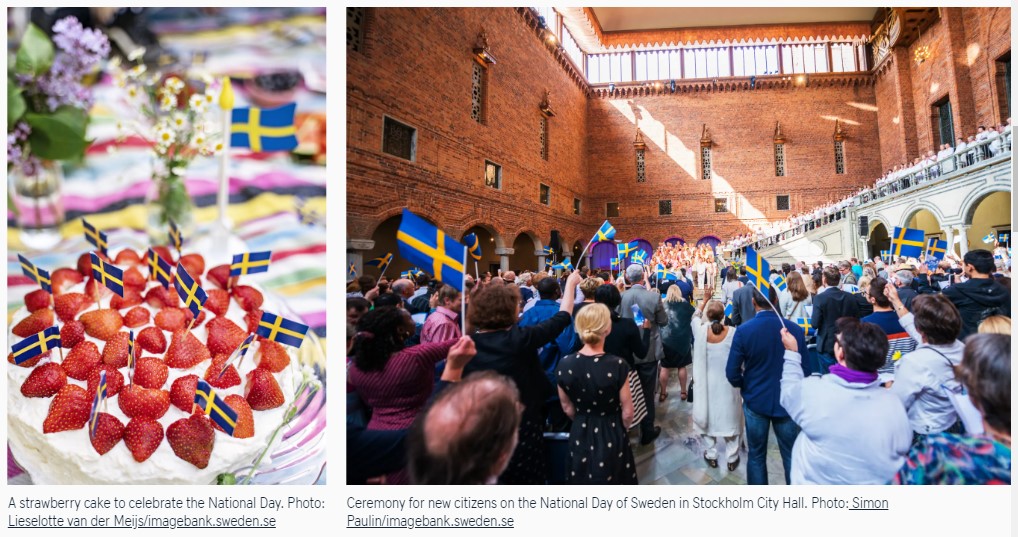Normally, the King and Queen of Sweden take part in a ceremony at Skansen, Stockholm’s open-air museum, on the National Day. The yellow and blue Swedish flag is run up the mast, and children in traditional peasant costume present the royal couple with bouquets of summer flowers.
Special ceremonies welcoming new Swedish citizens are also usually held around the country on National Day.

The beginnings
The last time people in general took an active interest in Sweden as a nation-state was at the turn of the century (around 1900, that is) when national-romantic winds were blowing through the country and folklore societies and local history museums were established.
From our partners:
It was then that 6 June first became a day of celebration.
Public holiday since 2005
In 2004, the Swedish parliament voted to make it a public holiday, which may cause people to become more interested in celebrating it. This decision took decades to reach − various proposals had been discussed under a succession of governments. The public holiday was finally implemented in 2005.
There are also groups lobbying for the introduction of an official national pastry, and a national dish, and for the key-fiddle (nyckelharpa) to be made the national instrument. But even for ideas as innocent as these, arriving at a consensus has proved difficult.
Sweden’s National Day – the origins
Since 1983, Sweden has celebrated its National Day on 6 June. It is the date on which Gustav Vasa was elected king in 1523. This laid the foundation of Sweden as an independent state, and on the same date a new, important constitution was adopted in 1809.More on the origins of Sweden’s National Day
For enquiries, product placements, sponsorships, and collaborations, connect with us at hello@zedista.com. We'd love to hear from you!
Our humans need coffee too! Your support is highly appreciated, thank you!

